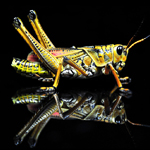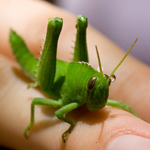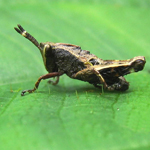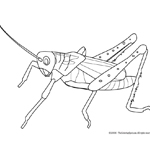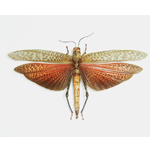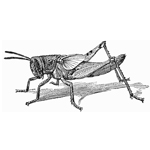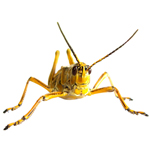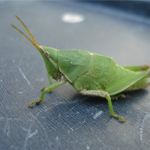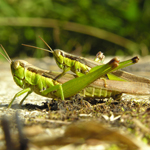
A "plague of locusts" is perhaps our most common reference to the grasshopper family, and gives this insatiable insect a horrifying reputation. Walt Disney did his best to anthropomorphize this creature in the guise of Jiminy Cricket, the comical and wise sidekick of Pinocchio, serving as his official conscience. In heraldry, nobility and wisdom were two of the grasshopper's attributes, emblematic of great warriors and destroyers.
For the Ancients, the mysteries of the cosmos were explained in legends about creatures large and small, the grasshopper being one of the smallest and also among the earliest to arrive on the mythical stage. Evidence of its role in the cultural life of human societies can be found in art, mythology, religion and literature dating back thousands of years. Queen Mab of Celtic myth, said to be the midwife to the fairies, had a carriage made from grasshopper wings, and a riding whip made of a cricket's bone. In many Native American cultures, the grasshopper or locust was a symbol of creation, and played an important role in describing the people's origins. Whole nations identified with it, naming themselves "Grasshopper People" and "The People of the White Locust". For the Hopi and Pueblo Indian, the grasshopper was the supernatural patron of the flute players.
Grasshopper as spirit guide advises one to take that leap of faith without fear and without preparing too much. The grasshopper totem is rich with the power of song and sound, ancient mediums in which to alter consciousness and communicate with our animal and spirit relations.
See also: Insect Tattoo Index and Insect Tattoos.


